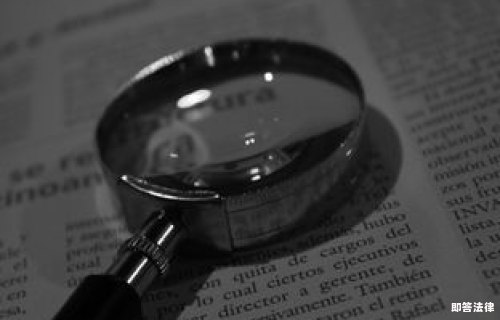2024关于西安大清真寺的导游词合集5篇
摘要:荫,花园对称分列,石制牌楼耸立其间,碑阴雕刻有闻名书法家米芾、董其昌的题字。第三院是敕赐殿,院中央是三层布局优良的八角形省心楼。南北两厢是经堂、宫殿,内里珍藏有阿拉伯文和华文翻译的《古兰经》及贵重书画等。第四院中心是一真亭,又名凤凰亭,南北各有面宽七间的厅房。南厅后有石碑廊,陈列着建设和重修清真寺的碑刻。一真亭后有海棠形鱼池喷泉,亭南北各有一座碑亭。进石门,走上辽阔的大月台,大殿就在正端。大殿面阔
关于西安大清真寺的导游词精选篇1
清真大寺位于西安市鼓楼街北隅的化觉巷内。因为它与大进修巷的清真寺对象遥遥相望,并且局限较大,故又被称为东大寺或清真大寺,为世界重点文物掩护单元。
据寺内现存石碑记实,清真大寺建成唐玄宗李隆基天宝元年(742年),距今已有1250多年的汗青。经宋、元、明、清屡次重修和护建,慢慢形陈局限弘大,楼台、亭殿机关紧凑调和,肃静肃穆的构筑群。清真寺前后分四个院落,占地面积13000多平方米,构筑面积5000多平方米。前院紧临照壁的木牌坊,高约9米,琉璃瓦顶,挑角飞檐,雕梁画栋,极为壮观。南北双方为仿古构筑的迎接室。
第二院是悬挂“清真寺”匾额的五间楼。院内树木成荫,花园对称分列,石制牌楼耸立其间,碑阴雕刻有闻名书法家米芾、董其昌的题字。
第三院是敕赐殿,院中央是三层布局优良的八角形省心楼。南北两厢是经堂、宫殿,内里珍藏有阿拉伯文和华文翻译的《古兰经》及贵重书画等。
第四院中心是一真亭,又名凤凰亭,南北各有面宽七间的厅房。南厅后有石碑廊,陈列着建设和重修清真寺的碑刻。
一真亭后有海棠形鱼池喷泉,亭南北各有一座碑亭。进石门,走上辽阔的大月台,大殿就在正端。大殿面阔7间,进深9间,面积约1300平方米,可容纳千余人同时作星期。殿内天棚藻井,有画600余幅,彩绘图案纷歧,墙壁刻蔓草斑纹,套刻古兰经,构图着色,均示意中国伊斯兰教寺院构筑和宗教彩画的特色。
关于西安大清真寺的导游词精选篇2
陕西西安大清真寺英文导游词
The Great Mosque at Huajue Lane The Mosque is a major spot for religious activities of over 60.000 Moslems in X i'an, likewise, an important cultural relic protected by the Provincial People's Govern ment. Unlike the Arabic mosques, with splendid domes, the minarets reaching into t he clouds, the coulourful engraved sketches with dazzling patterns, the Mosque here in Xi'an possesses much Chinese traditional touch in both its design and artistic ou tlook; besides the style peculiar to Islamic mosques, this Mosque also holds charact eristics of Chinese pavilions with painted beams and engraved ridgepoles. However, any further discussion about the Mosque will be futile unless anything of the introduction of Islam into China is brought up. Islam as a religious order was founded in the early period of the 7th century A. D. and was introduced to China in the mid-600s. At that time, Arabian merchants a nd travelers came to the northwest of China by way of Persia and Afghanistan and thus established diplomatic, trade, and military contacts with China. In the meanti me, another route saw a batch of sea voyagers through Bangladesh Bay and the M alacca Strait to China's Guangzhou, Quanzhou, Huangzhou, Yangzhou and other citie s where many of them settled down and married the local women who later gave birth to babies who then became Moslems.
However, massive immigration of the Moslems to China did not take place until as late as the early period of the 13th century, when Genghis Khan, as a result of his expedition against the west, had conquered vast expanses of land stretching fr om Central Asia to Eastern Europe, including the north of Iran. Many of the Moslem s in the conquered areas were thus forced to enlist and later settled in China. Among the enlisted many were soldiers, and some were smiths and officials wh o were called the Hui people in the history books on the Yuan dynasty. The Hui pe ople later followed Kublai Khan down to the south, helping him unifying China and then establish the Yuan dynasty.
In the wake of the conquest, Islam spread all ove r China and mosques began to appear everywhere. In the Yuan dynasty, many Moslems held positions both in the military and civilian organs of the country. And a lot of the Moslems took part in Zhu Yuanzhang's uprising in the early 14th century an d made great contributions to the founding of the Ming Dynasty. Therefore, all the emperors of the Dynasty issued mandates to protect Islam, and to set up mosques in praise of the Moslems for their feats. In the early 16th century, Islam predomin ated Qinghai on the minority nationalities including the Huis, the Uygurs, the Kazaks, the Kirgizes, the Tajiks, the Tartars, the Ozbeks, the Dong Xiangs, the Salars and the Bonans. The Moslems in Xi'an are mainly the Huis, being a small portion out of the ten million in China. The Mosque at Hua Jue Lane is the largest in Xi'an, and at the same time, it i s also one of the earliest built on a comparatively large scale, and well preserved mosques in China. According to the Stele on the Building of the Mosque, the mosque is said to be built in the Tang Dynasty. However, the architectural style of the mosque sugge sts a possible building dating back to the Ming Dynasty. The four courtyards of the mosque cover an area of more than 12,000 square meters, out of which about 4,0 00 are occupied by various structures.
The still intact wooden front memorial gatew ay of the front yard, built at the turn of the 17th century, with glazed tiles on the top, spectacular corners and upturned eaves, is about 9 metres high, and has a his tory of about 360 years. The stone memorial gateway in the center of the second c ourtyard is flanked with a tail stele on either side with dragons carved on each, rec ording the repair work ever since the building of the Mosque. On the back of one of the steles are engraved characters by the master calligrapher Mi Fu, May Buddhi sm Fill the Universe, on the other, Royal -Bestowedby Dong Qichang, another ma ster of the same art of the Ming dynasty. They are treasures in Chinese calligraphy. At the entrance of the third courtyard is an imperial built hall, where a month ta blet, showing the calculation of the Hui Calendars in Arabic, is stored. It was comp iled by a man in charge of the mosque called Xiao Mining in the early period of th e Qing dynasty. A three –storeyed octagonal wooden structure called Retrospection Toweralso stands in the center of the courtyard, which has the same function as the minaret in Islamic temples in Arabic countries, and which is a place from where orders were sent to call the Moslems to come to worship.
Respectively, on the south and north wings of the tower, are a reception chamber and a Scripture Chamber, both elegantly laid out. The five wooden houses, which are called Water Housesi n the southwest section of the Mosque are the place where the believers bathe the mselves before they attend their services. And in side the fourth courtyard there is a structure called the Pavilion of Phoenix, a place where the worshipers used to wait for the services. The Pavilion, in fact, is a compound structure of three small b uildings. The six-gabled structure of the central part, adjoining the two three-gabled buildings on each side looks very much like a flying phoenix, and hence its name. Just at the back of the Pavilion, there is a fishpond, beyond which is a platform oc cupying an area as large as 700 m2. Across both ends of the platform stands the 1,300 square metered service hall, holding over a thousand worshipers at once. The re are over six hundred sunk panels well as the sunk panels, are decorated with pa tterns of painted trailing plants and Arabic letterings. The imam leads his group of worshipers, while facing in the direction of Mecca, to chant in Koran and to pay the ir religious homage. The Moslems in China share very much the same customs with their
brothers a nd sisters elsewhere in the world. They worship five times a day: at dawn, at noon, in the afternoon, at dusk, and at night. Female worshipers attend their services in a separated place from their brothers, usually at home. Moslems pay special attenti on to their health and see that they always wear clean clothes. They are teetotaler s not only of wine, but also of pork and animal blood for in Koran pigs have been mentioned four times as being unclean. According to Koran, a man can have four wives and women should wear veils when they go out. However, except a few pla ces in Xinjiang, the Chinese practise monogamy and women are veiless when they go out. Upon his death, a Moslem has to be thoroughly cleaned(thoroughly bathe d), has to be put on Ke Fan(to be shrouded with a piece of white cloth) and has to be buried coffinless in the ground, with an imam reciting Scriptures at the funer al. The Chinese constitution promulgates that freedom of religion of each citizen an d freedom of preserving or reforming local customs for every nationality are permitt ed. And of course, the Moslems in China enjoy equal rights with peoples of other nationalities and their religious beliefs and customs are respected everywhere in the country.
关于西安大清真寺的导游词精选篇3
周末想放松一下,选择和朋友一同出去游玩,逛着逛着就走到了久负盛名的回民街,我们尽情的吃喝玩乐,尝一下贾三家的灌汤包子、老米家的泡馍、定家的小酥肉、还有东南亚甑糕,没多久饱腹感便油然而生,所以我们就在附近悠哉悠哉的散步,走着走着看到了一座仿古牌坊,上面写着“化觉巷”这里面是大多数是一些仿古的小纪念品,还有一些皮影之类的西安本地文物,我们沿着这条街继续往深处走,便看到清真寺的正门赫然出现在我们面前,我们便决定去哪里逛逛。
清真寺对于不是回族的朋友是要收门票的,这是去了之后我们才意识到的,但是不要紧张,门票真的不贵,而且我感觉特别的值。清真寺的整体建筑是明清风格的,非常考究,呈现在眼前的并不是我想象中圆顶建筑物,而是木牌坊、石牌坊、鳌驮的御赐石碑、飞檐的殿阁、八角玲珑的塔楼,屋顶是蓝色的琉璃瓦,慈禧太后题字的匾额,米芾的字,苏东坡的字,董其昌的字,还珍藏有清代手抄本《古兰经》和一幅《麦加图》,《古兰经》放在一个木匣子里,再往里面走是一座省心楼,两层楼,三层檐,碑文是用阿拉伯语写的,很多建筑雕花很精美,给人庄重威严的感觉。四周的墙壁上挂着一些经文的雕刻,其实仔细看看,寺内有很多精美的砖雕含有伊斯兰文化的痕迹,寺内左侧正中有为做礼拜前专用的沐浴间,寺内建筑雄伟,环境清幽,整体寺院给我留下的印象就是神圣。
其实对于民族文化和伊斯兰教感兴趣的朋友可以选择去逛一次,里面的藏品都是古色古香,原汁原味,值得一游的,去一次真是对心灵的洗涤,使人心生敬畏。
关于西安大清真寺的导游词精选篇4
大清真寺位于西安鼓楼西北的化觉巷内,又称化觉巷清真大寺。它与西安大进修巷清真大寺并称为中国西安最迂腐的两座清真大寺,因其在大进修巷寺以东,故又叫东大寺,为中国四大清真寺之一,是西安六万多穆斯林过宗教糊口的首要场合,也是我国构筑最早、局限最大、生涯较为完美的清真寺之一。
大清真寺始建于唐天宝元年(公元742年),是一座汗青久长、局限弘大的中国殿式古构筑群,是伊斯兰文化和中国文化相融合的结晶。寺院历经宋、元、明、清各代的维修及掩护,才成为今朝的名堂,是陕西省重点文物掩护单元。
大清真寺共有四个院落,机关上采纳了中国传统的中轴构筑为主、阁下构筑对称为辅的情势。寺内随处可见亭台楼阁,雕梁画栋,既有中华民族的传统气魄威风凛凛,又有伊斯兰教清真寺的格协调特点,因而在构筑特点上气魄威风凛凛出格,匠心独运。
寺内第一进院,古建木牌竖于中央,高峻风雅,雕绘精细,琉璃瓦顶,很是壮观;第二进院内,中央直立石牌楼一座,后有“冲天雕龙”石碑以及“敕赐星期寺”的“敕赐殿”;第三进院内,省心楼位居中央,乃二层三檐八角形攒顶古楼,其侧建有“讲经堂”,内藏有明代手抄本“古兰经”和天方麦加图;第四进院中央有凤凰亭一座,状如展翼神鸟,随后尚有全寺的中心场合——星期大殿。大殿约1300平方米,可容纳千余人做星期,其内还有井画400余幅,书以阿拉伯文图案,构图各具千秋。
大清真寺景致美妙,意境悠远。平安伫立的迂腐石质构筑以及光华黯淡的亭台楼阁,都似由迢遥的唐朝一起行将而来,伴有淡淡的孤傲气质,记录下片片逝去的年华。
关于西安大清真寺的导游词精选篇5
The Mosque is a major spot for religious activities of over 60.000 Moslems in Xian, likewise, an important cultural relic protected by the Provincial Peoples Government. Unlike the Arabic mosques, with splendid domes, the minarets reaching into the clouds, the coulourful engraved sketches with dazzling patterns, the Mosque here in Xian possesses much Chinese traditional touch in both its design and artistic outlook; besides the style peculiar to Islamic mosques, this Mosque also holds characteristics of Chinese pavilions with painted beams and engraved ridgepoles.
However, any further discussion about the Mosque will be futile unless anything of the introduction of Islam into China is brought up.
Islam as a religious order was founded in the early period of the 7th century A.D. and was introduced to China in the mid-600s. At that time, Arabian merchants and travelers came to the northwest of China by way of Persia and Afghanistan and thus established diplomatic, trade, and military contacts with China. In the meantime, another route saw a batch of sea voyagers through Bangladesh Bay and the Malacca Strait to Chinas Guangzhou, Quanzhou, Huangzhou, Yangzhou and other cities where many of them settled down and married the local women who later gave birth to babies who then became Moslems.
However, massive immigration of the Moslems to China did not take place until as late as the early period of the 13th century, when Genghis Khan, as a result of his expedition against the west, had conquered vast expanses of land stretching from Central Asia to Eastern Europe, including the north of Iran. Many of the Moslems in the conquered areas were thus forced to enlist and later settled in China.
Among the enlisted many were soldiers, and some were smiths and officials who were called the Hui people in the history books on the Yuan dynasty. The Hui people later followed Kublai Khan down to the south, helping him unifying China and then establish the Yuan dynasty. In the wake of the conquest, Islam spread all over China and mosques began to appear everywhere. In the Yuan dynasty, many Moslems held positions both in the military and civilian organs of the country. And a lot of the Moslems took part in Zhu Yuanzhangs uprising in the early 14th century and made great contributions to the founding of the Ming Dynasty. Therefore, all the emperors of the Dynasty issued mandates to protect Islam, and to set up mosques in praise of the Moslems for their feats. In the early 16th century, Islam predominated Qinghai on the minority nationalities including the Huis, the Uygurs, the Kazaks, the Kirgizes, the Tajiks, the Tartars, the Ozbeks, the Dong Xiangs, the Salars and the Bonans. The Moslems in Xian are mainly the Huis, being a small portion out of the ten million in China.
The Mosque at Hua Jue Lane is the largest in Xian, and at the same time, it is also one of the earliest built on a comparatively large scale, and well preserved mosques in China.
According to the Stele on the Building of the Mosque, the mosque is said to be built in the Tang Dynasty. However, the architectural style of the mosque suggests a possible building dating back to the Ming Dynasty. The four courtyards of the mosque cover an area of more than 12,000 square meters, out of which about 4,000 are occupied by various structures. The still intact wooden front memorial gateway of the front yard, built at the turn of the 17th century, with glazed tiles on the top, spectacular corners and upturned eaves, is about 9 metres high, and has a history of about 360 years. The stone memorial gateway in the center of the second courtyard is flanked with a tail stele on either side with dragons carved on each, recording the repair work ever since the building of the Mosque. On the back of one of the steles are engraved characters by the master calligrapher Mi Fu, May Buddhism Fill the Universe, on the other, Royal -Bestowedby Dong Qichang, another master of the same art of the Ming dynasty. They are treasures in Chinese calligraphy. At the entrance of the third courtyard is an imperial built hall, where a month tablet, showing the calculation of the Hui Calendars in Arabic, is stored. It was compiled by a man in charge of the mosque called Xiao Mining in the early period of the Qing dynasty. A three –storeyed octagonal wooden structure called Retrospection Toweralso stands in the center of the courtyard, which has the same function as the minaret in Islamic temples in Arabic countries, and which is a place from where orders were sent to call the Moslems to come to worship. Respectively, on the south and north wings of the tower, are a reception chamber and a Scripture Chamber, both elegantly laid out. The five wooden houses, which are called Water Housesin the southwest section of the Mosque are the place where the believers bathe themselves before they attend their services. And in side the fourth courtyard there is a structure called the Pavilion of Phoenix, a place where the worshipers used to wait for the services. The Pavilion, in fact, is a compound structure of three small buildings. The six-gabled structure of the central part, adjoining the two three-gabled buildings on each side looks very much like a flying phoenix, and hence its name. Just at the back of the Pavilion, there is a fishpond, beyond which is a platform occupying an area as large as 700 m2. Across both ends of the platform stands the 1,300 square metered service hall, holding over a thousand worshipers at once. There are over six hundred sunk panels well as the sunk panels, are decorated with patterns of painted trailing plants and Arabic letterings. The imam leads his group of worshipers, while facing in the direction of Mecca, to chant in Koran and to pay their religious homage.
The Moslems in China share very much the same customs with their brothers and sisters elsewhere in the world. They worship five times a day: at dawn, at noon, in the afternoon, at dusk, and at night. Female worshipers attend their services in a separated place from their brothers, usually at home. Moslems pay special attention to their health and see that they always wear clean clothes. They are teetotalers not only of wine, but also of pork and animal blood for in Koran pigs have been mentioned four times as being unclean. According to Koran, a man can have four wives and women should wear veils when they go out. However, except a few places in Xinjiang, the Chinese practise monogamy and women are veiless when they go out. Upon his death, a Moslem has to be thoroughly cleaned(thoroughly bathed), has to be put on Ke Fan(to be shrouded with a piece of white cloth) and has to be buried coffinless in the ground, with an imam reciting Scriptures at the funeral.
The Chinese constitution promulgates that freedom of religion of each citizen and freedom of preserving or reforming local customs for every nationality are permitted. And of course, the Moslems in China enjoy equal rights with peoples of other nationalities and their religious beliefs and customs are respected everywhere in the country.
来源链接:https://www.falvshike.com
本站声明:网站内容来源于网络,如有侵权,请联系我们,我们将及时处理。
法律问题免费咨询,老师微信:Huhusfsf (点击复制微信号)
扫描二维码推送至手机访问。
版权声明:本文由即答官方结合法律法规整理并发布,多数内容为本站原创。极少部分为转载文章,并不用于任何商业目的,仅供学习参考之用;版权归原作者所有,如涉及作品内容、版权和其他问题,请与本网联系,我们将在第一时间删除内容!投诉邮箱:it137fx@163.com 如需转载请附上本文完整链接








